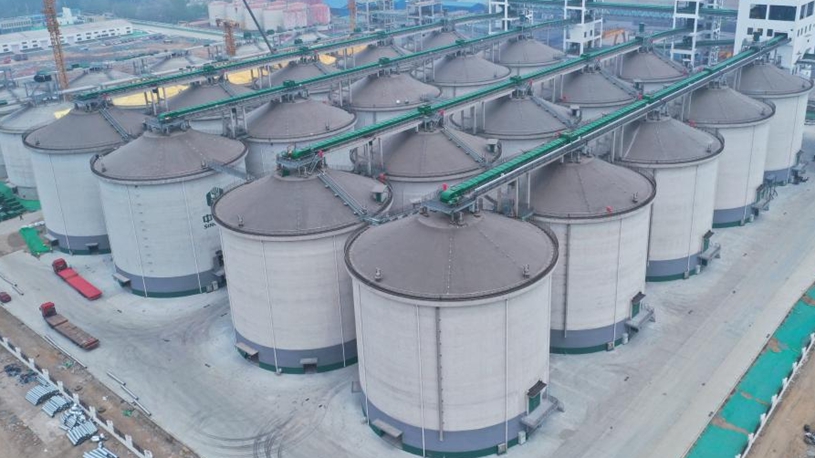
Tourists watch a folk dance performance at the Nanning Garden Expo Park in Nanning, south China's Guangxi Zhuang Autonomous Region, April 30, 2023. China is witnessing a travel boom during this year's five-day May Day holiday. (Xinhua/Zhou Hua)
NANNING, May 2 (Xinhua) -- China is seeing a record-high May Day holiday travel rush amid excitement over a sharp rebound in tourism, with pent-up demand released following the end of pandemic curbs late last year.
As one of the three longest holidays in the country, the five-day holiday takes place between April 29 to May 3 this year, with the China Tourism Academy predicting that over 240 million passenger trips will be made during the period, surpassing the 2019 level for the same holiday.
Railway trips in China hit a record high of 19.66 million passenger trips on Saturday, the first day of the holiday, according to the China State Railway Group Co., Ltd. The group said that about 120 million domestic trips are expected to be made by Chinese railway passengers from April 27 to May 4, an increase of 20 percent from the 2019 level.
"This might be the hottest May Day holiday ever. I was awed by the sheer number of tourists," said Zhang Jia, a tourist from south China's Guangxi Zhuang Autonomous Region who traveled to Beijing with her friend.
She said tickets for famous resorts such as the Forbidden City have been fully sold out.
Apart from the traditional tourism hotspots, travelers who opted for the country's less-known places have encountered the hustle and bustle of the tourism season.
Zibo, a small city in the coastal province of Shandong, has recently become a sought-after destination among young travelers after the industrial city was propelled to internet stardom by its iconic barbecues.
While sparing no efforts to rein in hotel price hikes and implement tourist-friendly policies to cater to the holiday fervor, the city's authorities issued a letter noting that the influx of tourists has exceeded the reception capacity and asked tourists to travel off-peak or consider other cities in Shandong.
In Nanning, the capital of south China's Guangxi Zhuang Autonomous Region, ASEAN-themed tourism has gained momentum given the region's proximity to Southeast Asia.
"The number of people visiting here in the first quarter almost quadrupled compared to that of the same period of 2019, while operating revenue has seen explosive growth," said Hu Yang, marketing director of Fantawild Asian Legend, a theme park in Nanning showcasing the cultures of 10 ASEAN countries.
Hu said more and more visitors are flowing in from outside the region, indicating a strong rebound in tourism nationwide.
The service sector nationwide has been scrambling to cope with an influx of tourists, as many have been out and about and keen to spend.
Zhuo Bingyue, who owns a Thai cuisine eatery in Nanning, said her business has seen an unrelenting inflow of customers waiting in lines.
"We have guests all day long, with all the tables on the two floors occupied," she said, adding that she has rented the storefront next door, with a view to expanding her eatery.
A recent report issued by the China Tourism Academy said that the number of domestic tourist trips will reach about 4.55 billion in 2023, a surge of 73 percent year on year. The total number of inbound and outbound tourist trips will surpass 90 million, doubling from a year ago. ■











